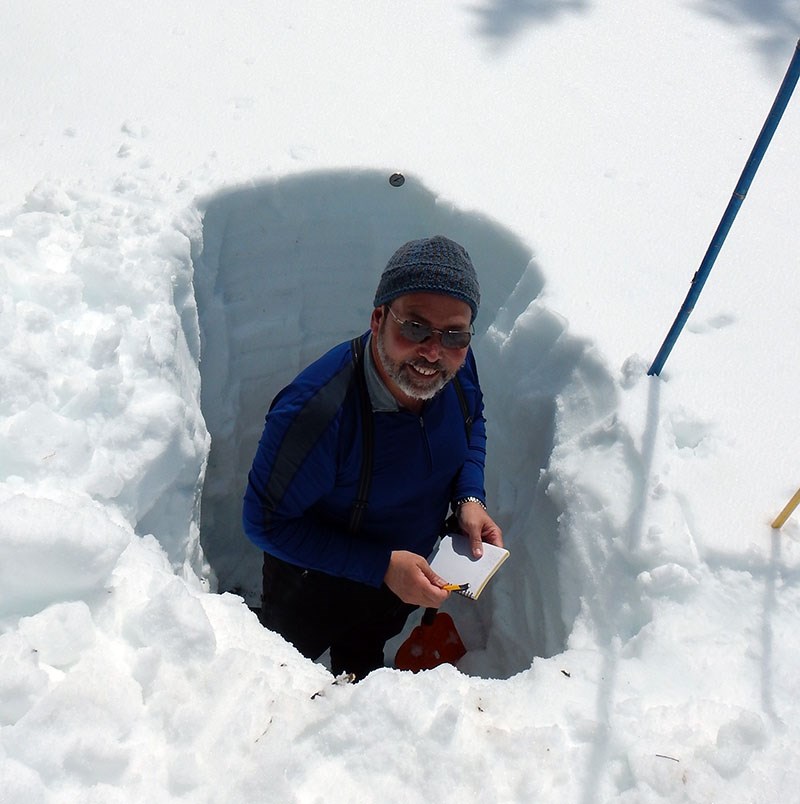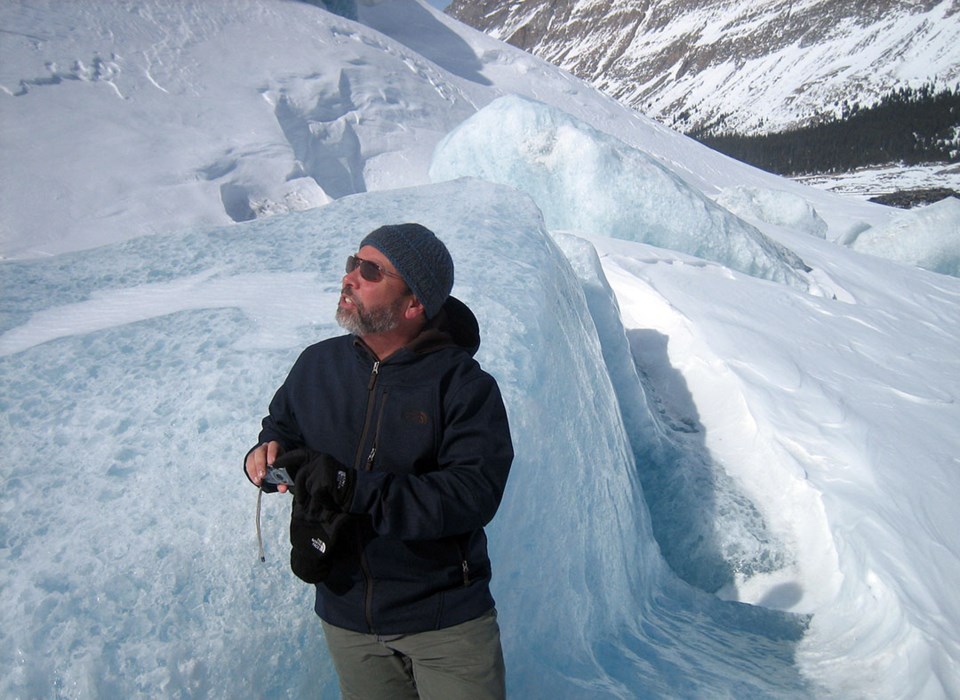SASKATOON — Snowfall struck Saskatchewan with full force in the final days of November and leading into December, piling up in urban areas and swirling across the countryside.
But while the thick snow might slow things down for us, how much do we actually know about the snow?
Dr. John Pomeroy (PhD) is the director of the University of Saskatchewan (USask) Centre for Hydrology, a member of the Global Institute for Water Security, a UNESCO Chair in Mountain Water Sustainability, and a distinguished professor in the Department of Geography and Planning in the College of Arts and Science.

Dr. John Pomeroy (PhD) is the director of the USask Centre for Hydrology. Photo courtesy USask
One of the world’s leading hydrologists, Pomeroy knows a lot about snowfall and snowmelt. Research Profile and Impact spoke with him to get the facts about our big dump of snow.
Snowfall is extremely valuable to the Saskatchewan economy and environment
Pomeroy calls snow “white gold,” and it’s for good reason.
As he puts it, a significant part of Saskatchewan’s economy revolves around agriculture. And keeping things green in what would otherwise be a semi-arid landscape requires a lot of water.
Snowfall and the annual snow melt are critical for replenishing the water supplies Saskatchewan relies on to survive. So, the bigger the snowfall, the better in the long run.
“Snow is sort of like money in the bank. It’s a bit of a guarantee for crop growth the next summer,” Pomeroy said. “Saskatchewan is still coming out of a drought and our subsurface water supplies are diminished in many areas. We need more snowmelt to replenish those and to help ensure a good crop.”
We have a lot, but we want more
Despite the large pile of snow that recently buried Saskatchewan, Pomeroy says we absolutely are looking for more this winter.
When snow falls early and sits out under the wind and the sun, it causes the snow to sublimate – or evaporate directly from a solid into gaseous vapour.
This means that the snow will slowly release itself back into the atmosphere instead of our waterways, something that Pomeroy said is something to consider with a snowfall this relatively early in the season.
But sublimation isn’t always a bad thing. Most snowflakes can only travel a couple of kilometres before sublimating, which means they don’t all pile up.
“We’re lucky snow sublimates. Otherwise, cities like Saskatoon and Regina would get buried under snowdrifts hundreds of metres deep and disappear like some of the ancient cities of the Sahara Desert did under sand dunes,” Pomeroy said.
It might be heavier to shovel, but we want wet and sticky snow
The wet and heavy snow isn’t just good for making snowballs.
To create snow that sticks in place and doesn’t blow around creating annoying snowdrifts or sublimating into the atmosphere, we want the wet and heavy stuff that is created when the temperatures are slightly warmer, Pomeroy said.
The light and fluffy snow that forms in colder temperatures might have less staying power, but that also means it blows easier and creates frustrating drifts and terrifying low-visibility storm conditions.
It can also be too cold to snow. Pomeroy said snow struggles to form in temperatures lower than –30 degrees Celsius, which Saskatchewan gets far too often.
We’ve had way worse snowfalls than this before.

Snowfall and the annual snow melt are critical for replenishing the water supplies that the Prairie provinces relies on, says Dr. John Pomeroy. Photo couresy USask
Yes, the big snowfall in late November was frustrating, closing schools and some streets. No, it doesn’t come close to the biggest snowfalls we’ve had.
Pomeroy cited a few instances in Saskatchewan’s history when the snowfall was much more intense – and impactful – than the recent snow days.
There was the snowstorm in January 2007, which shut down Saskatoon due to tremendous blowing snow and low visibility.
Storms in 1974 created snow drifts so high that Pomeroy said people riding Skidoos in southern Saskatchewan had to duck their heads to avoid running into power lines.
And a snowstorm back in 1947 created drifts so tall that they stopped trains.
“We’re not anywhere near the winter of 1947,” Pomeroy said with a laugh.
Snowfall is one third of our annual precipitation – but that might be changing
Winters are changing, and bigger dumps of snow might become more common.
Pomeroy said snowfall has dropped from accounting for about a third of Saskatchewan’s annual precipitation to about a fifth in parts of the province, partly due to more and more frozen rain in the middle of winter months than we used to see and partly due to warmer temperatures.
So slightly shorter but much snowier winter seasons could be the new normal.
“When you look at the future, climate change models predict much warmer winters ... and the snow cover season has already dropped about three weeks over the last half-century,” Pomeroy said. “If the snowfall and rainfall go up in the wintertime as predicted, this sort of storm that we just had might be something we see much more of in the future.”
BONUS FACT: You know those piles of dirt and snow that add up over the year? There’s a name for that.
Called “snirt” – literally for snow and dirt – by researchers, it occurs when winds pick up both snow and dirt that meshes before settling. It melts faster because it’s darker in colour, but it can also cause unpleasant living and travelling conditions. Nobody is a big fan of brown snow.




